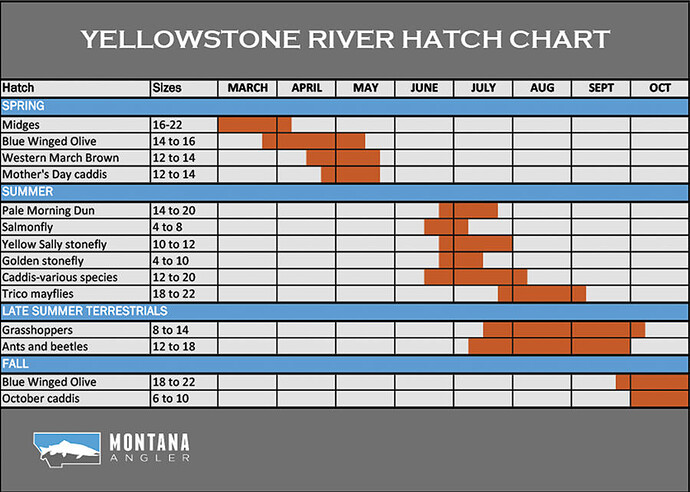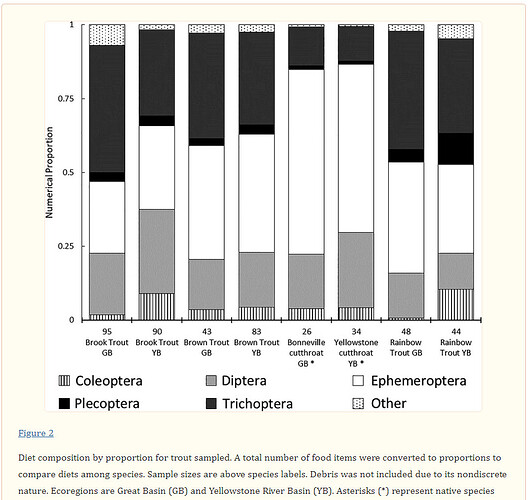As anglers, we tend to pay the most attention to the waters we are fishing and the fish rather than the surrounding topography, which may be a mistake. Tristan’s drone video lead in to the above video did a great job of showing the mostly timber free rock ridges that lay above the stream valley of he was fishing, which is a daily Terrestrial insect food producer for the trout living in that stream.
As the sun rises, it warms the rock on those ridges. The warmed rock heats the air above and the hot air rises, creating daily Thermal wind currents as cooler air from below rise to fill the void created. The up hill winds transport tons of land based insects into higher lakes and streams for the fish to eat. And when the wind rises, the fish start looking to the water surface for their food.
Aquatic insects only make up 5% of the total insect population, with the other 95% coming from the land, this is not a Hatch but a random deposit of many different kinds of bugs intermittently, so the fish are mostly willing to take anything that looks like it could be food on the surface of the water. While Terrestrial Patterns are called “Dry Flies” they do not ride high and dry on top of the water as aquatic dry fly patterns do but low in the water Damp Fly Patterns.
Much has and is being made about the Simplicity of Tenkara Fly Fishing - a rod, line and fly, with the fly usually being a Wet Fly. But fishing with Kebari, Soft Hackles, Beadhead Nymphs, streamers and such is, in reality, much more complicated than fishing with Dry Flies. How so? With dry flies you only have to work in two dimensions - length and width, and it all takes place on the water’s surface where you can easily see the fly and the fish coming for and taking the fly. Fishing subsurface puts the fly where it is hard to tell how deep it is ln the water and control it’s depth and you are mostly fishing Blind, which is anything but simple.
Watching Tristan fishing with a Damp dry Fly in the video, (except for watching the fly instead of watching his line) He did not appear to be fishing any differently than he casts and fishes with unweighted Kebari and he caught 42 fish in a little over 2 hours. By that time, all 6 of the fly’s legs were missing, as well as its 2 wings and most of the red eyes and head. The Metalic Blue Over-Body was all shredded and only held on by the ribbing, and the fly was still catching fish more than well enough. In my view it was not the pattern that was important but where and how the fly was being Presented, On The Surface, where the fish were looking to find their food.
Like Chris said, line droop will cause drag. Land based insects are out of their element in the water and will fight to get themselves out of the water and the trout can be attracted to take them by the movements the bugs make, so as long as the drag is not too great, and may actually help in catching fish. As for tenkara’s long rod and the ability to hold line up and off of the water with level line, in pocket water you are much better off with line off of the water than dealing with a fly rod and reel Heavy Floating Fly Line laying across multiple braided currents where Mending will not be enough to keep the fly from dragging too much…Karl.


